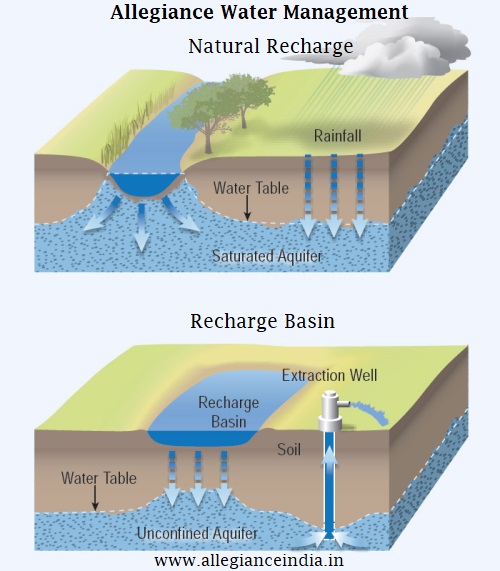Allegiance Rainwater Harvesting Solutions. we provide you with the best rainwater harvesting experience to suit your needs.
There are two ways of harvesting rainwater,
- surface runoff harvesting, also known as Injection well, Recharge well, Percolation well, Recharge Shaft
- Rooftop rainwater harvesting. there are so many filters available in the market you need to know who is the best as per your Needs & low Maintainance.
Generally, water harvesting is direct rainwater collection. Rain is the primary water source while lakes, groundwater, and rivers are the secondary water source. Rainwater harvesting is a type of harvest in which the rainwater is collected and stored for future use, instead of allowing them to run off.
WATER HARVESTING FOR AGRICULTURE
- Inter-row water harvesting– this technique is practiced in arid areas where annual rainfall is less than 750mm. crops are grown in narrow strips between wide intervals that are ridged as artificial miniature watersheds. Later on, these are compacted to increase runoff to the crop rows. There is no sacrifice of land in this technique. Inter-row systems also called “roaded catchments”, maybe the best technique to apply on flat lands. Triangular cross-sectional bunds or levees are constructed along the main slope of the land. The height of bunds ranges from 40 to 100 cm, built at distances of 2-10 m, Water runoff flowing down the slope is collected between the ridges and either directed to a reservoir at the end of a feed canal or to a crop cultivated between the ridges.
- Inter-plot or Micro plot water harvesting– water is harvested in the passages or furrows between the plots when rainfall is rather more. In this case runoff from the sloping area supplements rainfall for growing crops on level land.
- WH in farm ponds & Reservoirs– Farm ponds are small tanks or reservoirs constructed for the purpose of storing water essentially from surface runoff. Farm ponds are useful for life-saving irrigation, water supply for the cattle, fish production, etc. It is usually of 3 ft. depth with width and length varying depending upon the farmer’s land and catchment water potential in his field. Depending on the source of water and their location with respect to the land surface, farm ponds are grouped into four types- Dugout ponds, Surface ponds, spring or Creek fed ponds, and Off-stream storage ponds.

